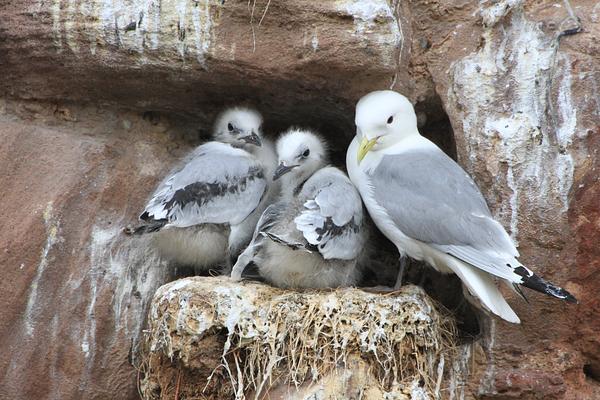
Kittiwake
Rissa tridactyla (black-legged kittiwake)
What do they look like?
Kittiwakes are medium sized gulls, with silvery-grey upper parts, white underparts and black wingtips. True to their name, they have black legs which contrast with their bright yellow beak. Juveniles have a distinctive black W shape across their wings and back. They feed on small fish, crustaceans and worms, picking them off the surface of the water in flight.
When can I see them in Scotland?
February - October
Where can I see them in Scotland?
Unlike some other species of gull, kittiwakes are rarely seen inland and spend the majority of their time at sea. They return to the coast to breed, seeking out rocky cliff tops and ledges, nesting in huge, noisy colonies. It’s possible to spot them around the majority of the Scottish coast during the summer months, with some especially large colonies nesting on the north and east coasts.
Conservation Status:
In the UK, bird species with breeding, passage or wintering populations are assessed by experts and assigned to the Red, Amber or Green lists of conservation concern. Kittiwakes are currently a ‘RED’ listed species.

